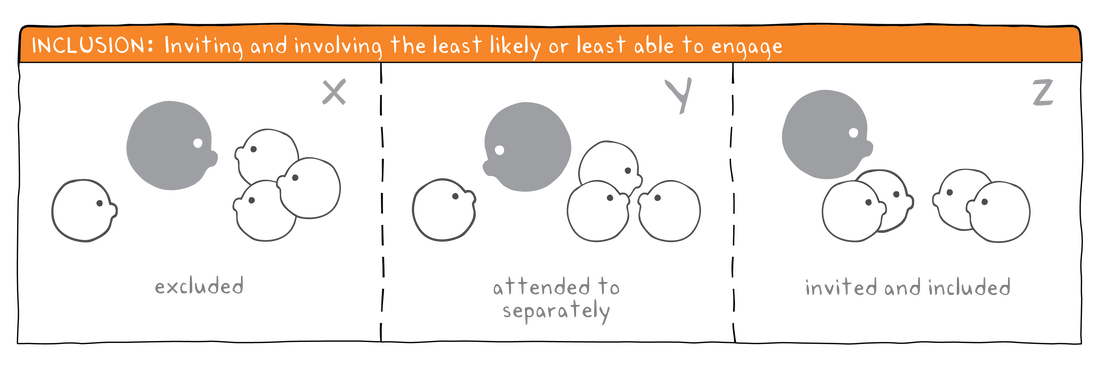inclusion
When you walk into any place with more than one child, you may notice some children appear to be participating less than the rest for reasons ranging from ability to temperament, the social and emotional state of the child, and the social and physical contexts. As observers, it is important not only to look at what kind of interactions are taking place, but also, “Who is (not) included?”
Observing inclusion starts with noticing children who seem least likely or able to engage with a larger group. There are three common modes of Inclusion:
Because most observational tools of interactions evolved from observing dyadic 1:1 interactions (e.g., parent-child), inclusion is not often explicitly assessed. In our fieldwork, we find that it is critical to pay attention to the “least among the group” and understand how they access or lose opportunities for human interactions - not just in quantity, but also in quality.
Sometimes people would ask, “Do you have a favorite dimension in the tool?” The official answer is, “They are all equally loved, of course!” (like how you would answer the question about your favorite child). In truth, some of us do consider Inclusion to be the most important of the four dimensions because of our shared commitment to a fair and equitable learning environment for all people.
Observing inclusion starts with noticing children who seem least likely or able to engage with a larger group. There are three common modes of Inclusion:
- X: Children are not included (passively or actively) in the group, either temporarily and self-selected (e.g., “I’d like some alone time”) or constantly and externally imposed (e.g., “I am not welcomed”).
- Y: An adult intentionally attends to a child separately, but does not yet invite or involve them to be a part of the larger group.
- Z: An adult invites and includes the “least among the group” to join the community of peers.
Because most observational tools of interactions evolved from observing dyadic 1:1 interactions (e.g., parent-child), inclusion is not often explicitly assessed. In our fieldwork, we find that it is critical to pay attention to the “least among the group” and understand how they access or lose opportunities for human interactions - not just in quantity, but also in quality.
Sometimes people would ask, “Do you have a favorite dimension in the tool?” The official answer is, “They are all equally loved, of course!” (like how you would answer the question about your favorite child). In truth, some of us do consider Inclusion to be the most important of the four dimensions because of our shared commitment to a fair and equitable learning environment for all people.
inclusion in motion
|
|
|
|


